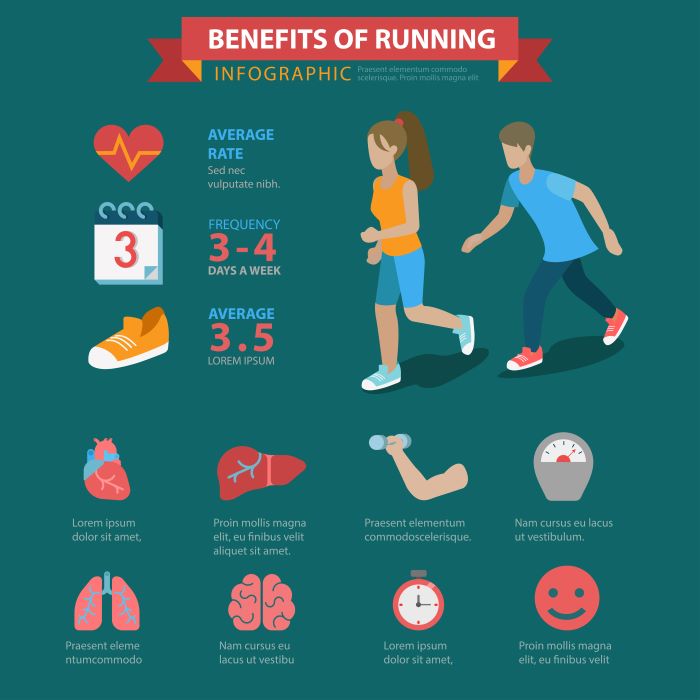Embarking on your first half marathon is an exhilarating journey that combines determination, physical endurance, and community support. For beginners, understanding what is the best half marathon training plan for beginners is crucial to achieving your goals. A well-structured training plan not only prepares you for the 13.1 miles ahead but also helps you build confidence and enjoy the process.
At the heart of effective training lies a balanced routine that incorporates various elements. Here are some key components to consider:
- Gradual Mileage Increase: Aim to increase your weekly mileage incrementally. This will help prevent injury while allowing your body to adapt.
- Rest and Recovery: Ensure you have rest days built into your schedule to allow your muscles to recover.
- Cross-Training: Incorporating activities like cycling or swimming can enhance your overall fitness without overloading your running muscles.
- Long Runs: Designate one day a week for a long run, gradually increasing the distance to build endurance.
By following a comprehensive training plan and surrounding yourself with a supportive community, you can make your half marathon experience rewarding and enjoyable. Visit our website to learn more and get started today! Click here.
Key Components of a Successful Half Marathon Plan

A successful half marathon training plan for beginners hinges on a few essential components that help runners build endurance, strength, and confidence. Understanding these key elements will set the foundation for your training journey.
Here are the critical components to include in your plan:
- Structured Workouts: A well-rounded plan should include a mix of different workouts, such as easy runs, tempo runs, and interval training. Each type serves a distinct purpose, from building stamina to improving speed.
- Long Runs: These are fundamental to any half marathon training plan. Gradually increasing the distance of your long runs will prepare your body for race day and develop mental resilience.
- Rest Days: Incorporating rest days into your weekly schedule is vital for recovery. This allows your muscles to repair and helps prevent burnout or injury.
- Nutrition and Hydration: Fueling your body appropriately during training is essential. Focus on a balanced diet rich in carbohydrates, proteins, and healthy fats, and stay hydrated to enhance your performance.
- Cross-Training: Engage in activities outside of running, like cycling or swimming, to build overall strength and prevent overuse injuries. This variety keeps your training fresh and enjoyable.
Integrating these components into your training plan will ensure a comprehensive approach that prepares you not just physically, but mentally, for the challenges ahead.
Essential Weekly Workout Structure for Beginners

For beginners embarking on their half marathon journey, establishing an essential weekly workout structure is crucial for building endurance and confidence. A well-planned schedule allows runners to progress steadily while minimizing the risk of injury.
Here’s a typical weekly structure that beginners can follow:
- Monday – Rest or Cross-Training: Start the week with a rest day or engage in low-impact activities like swimming or cycling to allow your muscles to recover.
- Tuesday – Short Easy Run: Aim for 3 to 4 miles at a comfortable pace. This run should feel easy and help you build your base mileage.
- Wednesday – Speed Work: Incorporate interval training or tempo runs. For example, run 5 minutes at a faster pace followed by 2 minutes of walking or jogging, repeating this for 20-30 minutes.
- Thursday – Cross-Training: Focus on strength training or yoga to improve flexibility and core strength, essential for running efficiency.
- Friday – Rest Day: Let your body recover from the previous workouts to prevent fatigue.
- Saturday – Long Run: This is the cornerstone of your training. Start with a distance of 5-6 miles and gradually increase by a mile each week, aiming for a maximum of 10-12 miles as you approach race day.
- Sunday – Recovery Run: Finish the week with a slow, short run of 2-3 miles to loosen up your muscles and promote recovery.
This structured weekly workout plan provides a balanced approach, ensuring you build stamina while allowing ample recovery time, setting you up for success in your half marathon training.
Incorporating Rest and Recovery in Your Training

When it comes to training for a half marathon, many beginners often underestimate the importance of rest and recovery. While it may seem counterintuitive, allowing your body adequate time to recuperate is just as crucial as the actual running workouts.
Incorporating rest days into your training plan helps in several ways:
- Muscle Repair: During rest, your muscles repair and rebuild, which is essential for improving strength and endurance. Training causes micro-tears in muscle fibers, and rest allows them to heal.
- Injury Prevention: Overtraining can lead to injuries such as shin splints, stress fractures, and tendonitis. Scheduling regular rest days minimizes the risk of these common running injuries.
- Mental Freshness: Constant training can lead to burnout. Taking breaks allows you to maintain motivation and joy in your running routine.
To effectively incorporate rest and recovery, consider the following strategies:
- Active Recovery: On rest days, opt for light activities such as walking, gentle yoga, or swimming. This keeps blood flowing to your muscles without putting additional strain on them.
- Listen to Your Body: Pay attention to signs of fatigue or pain. If you’re feeling particularly sore or exhausted, don’t hesitate to take an extra day off.
- Nutrition and Hydration: Fueling your body with the right nutrients and staying hydrated supports recovery. Prioritize protein-rich foods and electrolyte balance to promote healing.
By prioritizing rest and recovery in your training plan, you will not only enhance your performance but also enjoy the journey toward your half marathon goal.
Nutrition Tips for Half Marathon Training Beginners

Nutrition plays a pivotal role in your half marathon training, especially for beginners who may not be fully aware of how their dietary choices can impact their performance and recovery. Adopting a balanced and strategic approach to your meals can help you fuel your runs effectively.
Here are some essential nutrition tips to consider:
- Carbohydrate Loading: Carbohydrates are your primary source of energy during prolonged exercise. It’s crucial to consume complex carbohydrates such as whole grains, fruits, and vegetables, especially in the days leading up to your long runs.
- Protein for Recovery: After your training sessions, include lean protein sources like chicken, fish, beans, or legumes to help repair muscle damage and promote recovery.
- Healthy Fats: Don’t shy away from healthy fats found in avocados, nuts, and olive oil. These fats provide sustained energy and support overall health.
- Hydration: Staying hydrated is vital for optimal performance. Aim to drink water consistently throughout the day and consider electrolyte-rich drinks during long runs to replenish lost salts.
- Pre-Run Snacks: About 30 to 60 minutes before a run, consume a small snack such as a banana, a slice of toast with peanut butter, or an energy bar to give you a quick energy boost.
Additionally, experiment with your nutrition strategies during training to find what works best for you. Avoid trying new foods on race day, as this can lead to gastrointestinal discomfort. By focusing on a balanced diet tailored to your training needs, you can significantly enhance your running performance and recovery.
Joining a Running Community for Support and Motivation
As you embark on your half marathon training journey, one of the most impactful decisions you can make is to join a running community. Engaging with fellow runners not only provides essential support but also fosters motivation, accountability, and camaraderie. Training for a half marathon can be physically and mentally challenging, but having a community by your side can make the experience more enjoyable and rewarding.
Here are some compelling reasons to consider joining a running community:
- Shared Experiences: Running with others allows you to share your triumphs and challenges. Whether it’s celebrating milestones or discussing struggles, this connection enhances your motivation and commitment.
- Accountability: Being part of a group helps you stay accountable to your training schedule. When others are counting on you to show up for group runs, you’re less likely to skip a workout.
- Expert Guidance: Many running communities offer access to experienced runners and coaches who can provide valuable training tips, nutritional advice, and injury prevention strategies.
- Variety in Workouts: Training with a community opens up opportunities for diverse workouts, such as hill repeats, speed workouts, and fun runs, keeping your training routine fresh and exciting.
- Friendship and Fun: Beyond training, running communities often organize social events, races, and group outings, fostering friendships that extend beyond the pavement.
Incorporating a social aspect into your training can significantly enhance your overall experience and keep you motivated. If you’re ready to take the next step towards achieving your half marathon goals, visit our website to learn more and get started today! Click here.


